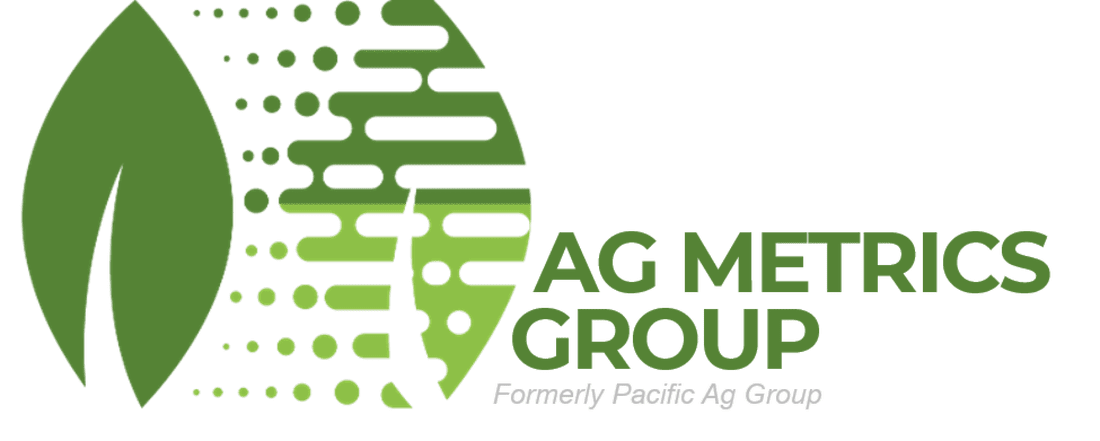New Pacific Ag Research Nematology Research Lab in Five Points, CA in the San Joaquin Valley4/25/2024
F.V. Sances (1), B. Aglave (1), K. Williams (1), C. Boone(1), B. Booker (2), W. Schonborn (3), & E. Rosskopf (3) (1) Florida Ag Research, (2) Ag Metrics Group, (3) US Department of Agriculture (Collaboration Only)
Here, we build on previous work from these and other researchers to develop site-specific “Best Practices” for alternative nematode and pathogenic soil fungi control for Central Florida. Two summer solarization trials took place at the Dover Lab and yields for ASD + Solarization were on par with fumigation. This season we increased precision of applications for manure and molasses and included raised beds or flat ground comparisons.
Flat Ground: In many commercial settings, ASD and Solarization treatments are easier accomplished on flat ground. Here, the chicken manure was applied to the treated area utilizing a cone spreader, followed by mechanical injection of molasses, then the area was disked and plastic mulched. Methodology
Raised Bed: Planting beds were inoculated with soil-borne diseases, Sting nematodes, and common weed seeds before treatment. Four replicates of five treatments were randomly placed into planting beds previously farmed in strawberries. Following summer solarization/ASD, beds were formed in September (Fumigated) and in October, half of the ASD and Solarization plots with clear plastic were painted black. Flat Ground: Bare ground areas were inoculated with soil-borne diseases, Sting nematodes, and common weed seeds before treatment. Four replicates of four treatments were placed into previously farmed strawberry ground. Each plot comprises one planted bed 120 ft in length. Following summer solarization and ASD plots, beds were formed in September. Crop Health Yields Cumulative Yield data for approximately 6 weeks of harvests at the raised bed (a) and flat ground (b) fields, compared to cumulative annual yield from the previous years’ study at Dover (c) and the Duette, FL, grower site that was a flat ground treatment (d). F.V. Sances (1), B. Aglave (1), K. Williams (1), C. Boone (1), S. Sances (2), W. Schonborn (3), & E. Rosskopf (3) (1) Florida Ag Research, (2) Ag Metrics Group, (3) US Department of Agriculture (Collaboration Only) Introduction
The recurring strawberry production challenges of managing soil borne pests in commercial Florida strawberry farms have never been greater. In conventionally farmed operations, increasing regulatory pressures on remaining registered chemical soil fumigants, and the costs associated with their use are important factors that reduce the sustainability of the industry going forward. Also, while still in its infancy, organic strawberry production in Florida is now well established, and the 2022-23 season brought numerous examples of severely impacted plantings from both nematodes and soil borne diseases. To meet the demand for domestically produced winter fruit, Florida’s organic strawberry growers have limited options for soil borne pest control and have come to rely on use of new land, field site isolation, high rates of organic soil amendments, and a variety of alternative organically approved soil pest control products with varying levels of efficacy.
Metagenomic analysis of 16S and ITS sequencing data of soil microbiome. 1149 features detected across 48 samples. Dendrogram determines similarity across samples. Unsupervised clustering (colors) show sample consistency across seasonal timepoints as well as potential outliers (left samples). Processed data was derived from Mr. DNA pipeline. Final timepoint had the clearest separation in soil treatments indicating high reliability of treatment specific species detection. 2022-2023 Data Review
This presentation brings current performance data from these alternative soil management practices, which includes molecular analysis of effects of treatments to the soil food-web, effects on bedding plastics used in solar heating of soil, and a comparison of yield enhancement and pest suppression efficacy of the methods. Soil Borne Pest Control
Macrophomina and nematode control for solarized plots was improved by “over the top” and ASD methods. Sting nematode suppression in the ASD and “over the top” treatments were on par with fumigant-treated plots. ASD did have a negative effect on certain brands of clear plastic.
Soil Sample Diversity Data summaries of "stackplot" representations of abundance data from genus level. Each timepoint grouped by treatment and stacked with detectable genera diversity expressed as percent of total abundance. Top 12 out of 349 genera listed. Alternating color bands show diverse genera, thickness is percent abundance ranked from most (bottom) to least (top). EARLY SOIL SAMPLE MID-SEASON SOIL SAMPLE LATE-SEASON SOIL SAMPLE Additional research funding provided by The Florida Strawberry Growers Association Foundation and the USDA
Summary: Management of soil borne pests on commercial Florida strawberry farms has long been a challenge to growers. In recent years, this has been particularly difficult with regulatory pressures on the use of remaining chemical soil fumigants and the costs associated with their use. Also, while still in its infancy, organic strawberry production in Florida has been established by several shippers to try to meet the demand for this strawberry market segment. To provide growers with alternative non-fumigant soil pest management techniques, this project builds on previous work from these and other researchers with an on-site demonstration of Soil Solarization and Anaerobic Soil Disinfestation for the 2023 grower outreach by our collaborative groups. Click Poster to Download
Neopestalotiopsis rosae can potentially become a significant problem for strawberry growers in the Salinas Valley of California. The study is authored by Dan Lawrence - Pacific Ag Research, Greg Brittain - Pacific Ag Research, Balaji Aglave - Florida Ag Research and Frank Sances - Ag Metrics Group. #research #strawberry #strawberrydisease #aps #crownrot #rootrot Read the Abstract Here:
https://apsjournals.apsnet.org/doi/10.1094/PDIS-04-22-0871-PDN
Florida Ag Research presented a “Proof of Concept” field demonstration intended to evaluate the suitability of using solar radiation to enhance soil borne pest control with Conventional Fumigants and Anaerobic Soil Disinfestation in commercial Florida strawberry production. Potential benefits of the system include: a) Solarization and ASD are approved organic soil pest control options b) Solarization with conventional soil borne pest control inputs may allow reduction in chemical usage c) ASD is a potential waste recycling system The project, which began in June of 2021, was published by Florida Ag Research/Ag Metrics Group scientists and growers: Frank Sances, Balaji Aglave, Mark Keeley, Kaleb Williams, and Charlie Boone. The Solarization Project was presented by Ag Metrics Group’s Mark Keeley (formerly a Station Manager of Florida Ag Research). “It was great to come back out and present this exciting work to growers and researchers since the ‘Field Day’ was cancelled last January,” said Keeley, “And a great opportunity to introduce Mariano [Galla], the new Florida Ag Research Station Manager, to the Florida strawberry grower community.” 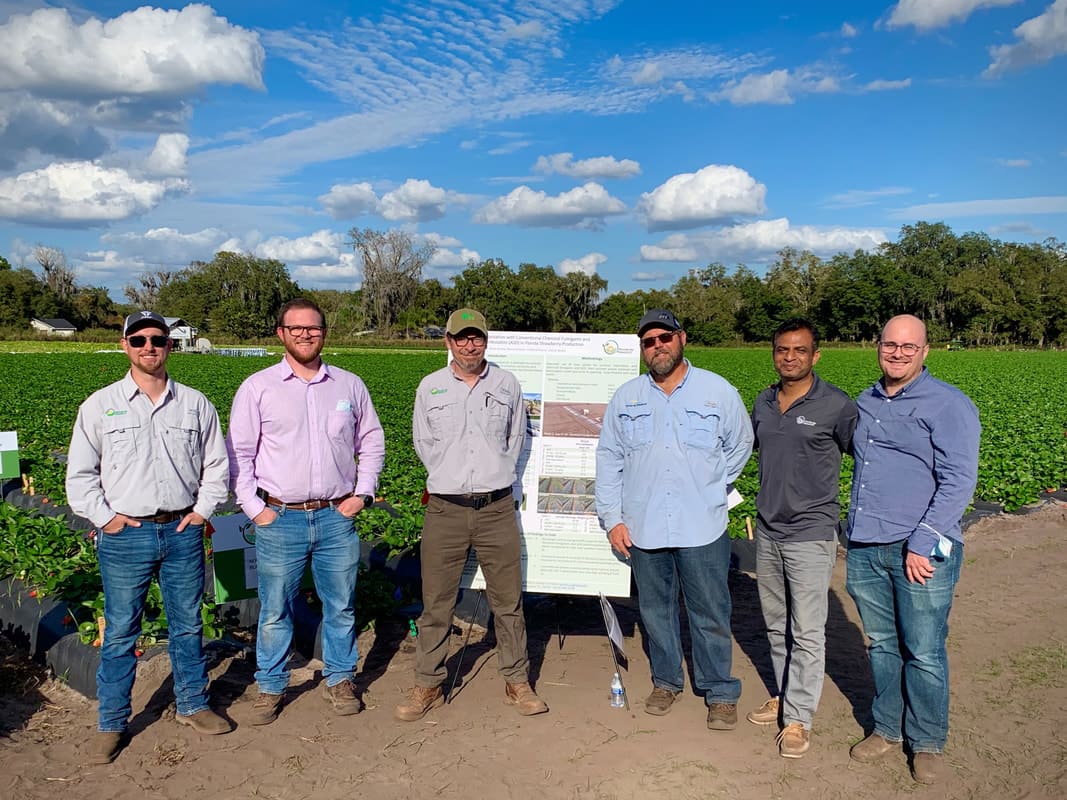 L to R: Florida Ag Research / Ag Metrics Group Project Team: Kaleb Williams - Field Operations, Mark Keeley - Special Projects, Brad Booker - Pacific Ag Research Station Manager (former Florida Ag Research Station Manager), Charlie Boone - Assistant Station Manager, Balaji Aglave - Nematology / Plant Pathology, Mariano Galla - Station Manager Introduction This "Proof of Concept" field demonstration is intended to evaluate the suitability of using solar radiation to enhance soil borne pest control with Conventional Fumigants and Anaerobic Soil Disinfestation in commercial Florida strawberry production. Potential benefits: a) Solarization and ASD are approved organic soil pest control options b) Solarization with conventional soil borne pest control inputs may allow reduction in chemical usage c) ASD is a potential waste recycling system Methodology Alternate use of clear plastic for summer solarization with chemical fumigants and ASD, then summer plastic replaced with black plastic mulch just prior to planting. Crop finished with black mulch. Summary of Findings To-Date
Conventional and Novel Fungicide Efficacy for Controlling Pestalotiopsis in Florida Strawberry5/28/2021 Florida Ag Research Report Frank Sances, Balaji Aglave, and Mark Keeley Summary Efficacy of various fungicide tank mixes which included combinations of Inspire and Rhyme, with Uptake, EnviroChlorite (DragonFire), Sportak 45 EC, AgroMos, and SoilSet are reported here for controlling Pestalotiopsis on strawberry. Plots were artificially infested with Pestalotiopsis and control on fruit and foliage, as well as yield effects, were assessed through the end of March. Figure 1. Overview of Brilliance variety strawberries planted in Thonotosassa, FL. Plants were infested with Pestalotiopsis just prior to the first application of various tank mixes and fungicides. Experimental Design Replicated plots were sprayed initially in mid-February to simulate grower conditions. Inoculated and noninoculated untreated check plots were included for reference and fungicide treatments included conventional and novel products applied alone or as tank mixes (Figure 2). Figure 2. Treatment list applied once February 16, or February 16, February 23, and March 2. Results Crop Response No crop injury was observed with any fungicide treatment used. RapidSCAN remote sensing equipment was used to measure canopy greenness (NDVI) and density (NDRE). Plants treated with the three Rhyme or Uptake sprays, or a solo application of Sportak 45 EC had significantly lower plant health readings for both parameters. Pestalotiopsis Control Strawberry plants in the inoculated and uninoculated check plots had higher average Pestalotiopsis severity one week after the second application. Plots treated with tank mixes of fungicides plus surfactants tended to have lower disease severity than the fungicide only applications, and plots treated with Sportak 45 EC, was among the least infested of any treatment. Foliar fungal control, relative to the inoculated check, was highest for plants treated with three applications of tank mixes of Inspire and Uptake (78%, Figure 3), while EnviroChlorite provided the least control (7.6%). Figure 3. Control, relative to the untreated check, for foliage and fruit. Average severity ratings over time (SAUDPC) were used to tabulate control with the Abbott’s formula. On fruit, differences among treatments were not statistically different from the untreated control (p=0.109). However, numerically treatments of AgroMos and SoilSet, whether alone or with Rhyme, as well as Rhyme alone, performed best for Pestalotiopsis control on fruit. Botrytis was also present in the field, although infection was uniform among treatments with no significant control observed with any of these spray regimes. Yield Marketable, unmarketable, and diseased berries were counted and weighed from seven post-treatment harvests (Figure 4). Marketable and unmarketable totals were uniform among treatment. The fewest Pestalotiopsis-infected fruit yields came from plots treated with tank mixes of Inspire and Uptake, with under 0.3% infected total berries. Switch and EnviroChlorite did not perform as well as the other fungicides in this study, with the most infected fruit as a proportion of the total yield (almost 3%). Estimated gross returns were calculated based on Florida returns for strawberries per the USDA market report. Returns to the grower were not statistically significant (p=0.58) among these fungicide treatments. Figure 4. Total yield for marketable, unmarketable (misshapen, discolored), or Pestalotiopsis infested berries were counted for seven weekly harvests. Infected fruit yields were significantly higher for plots treated with EnviroChlorite, with 35 infected out of a total 1656 berries harvested. Conclusions
Tank mixes of Inspire with Uptake applied three times resulted in the best control of Pestalotiopsis on plant foliage among the treatments tested, while EnviroChlorite applied alone was the least effective. Fruit yields however, were not significantly different among these treatments. |
Archives
April 2024
Categories
All
|

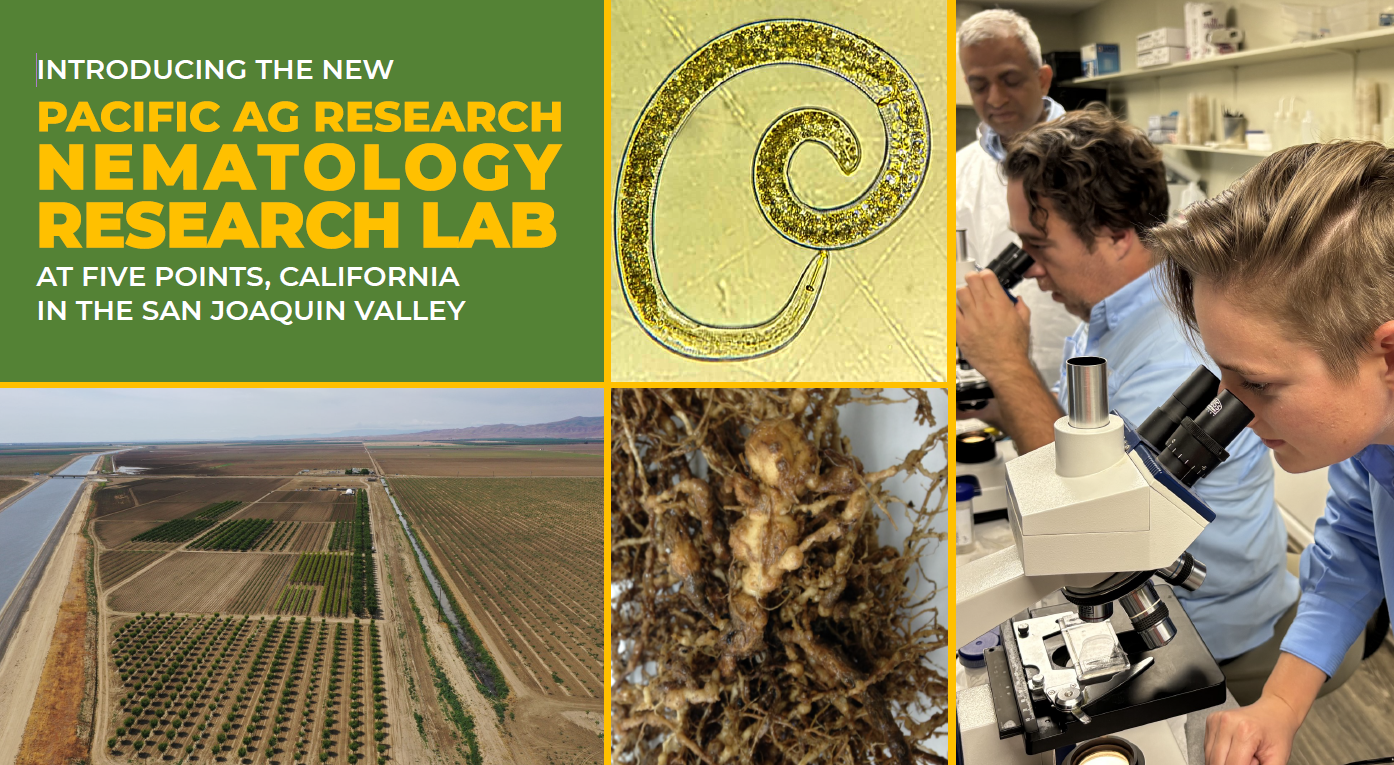


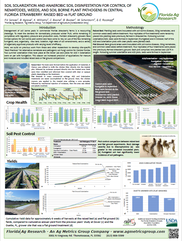
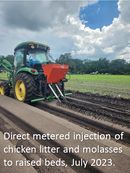

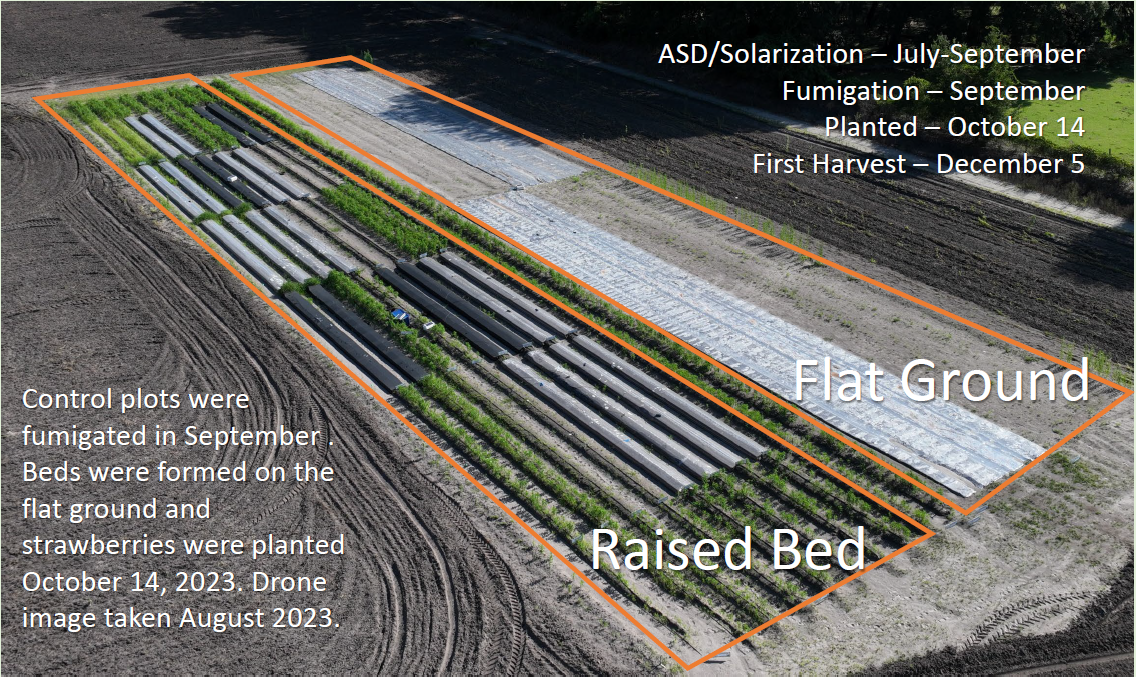
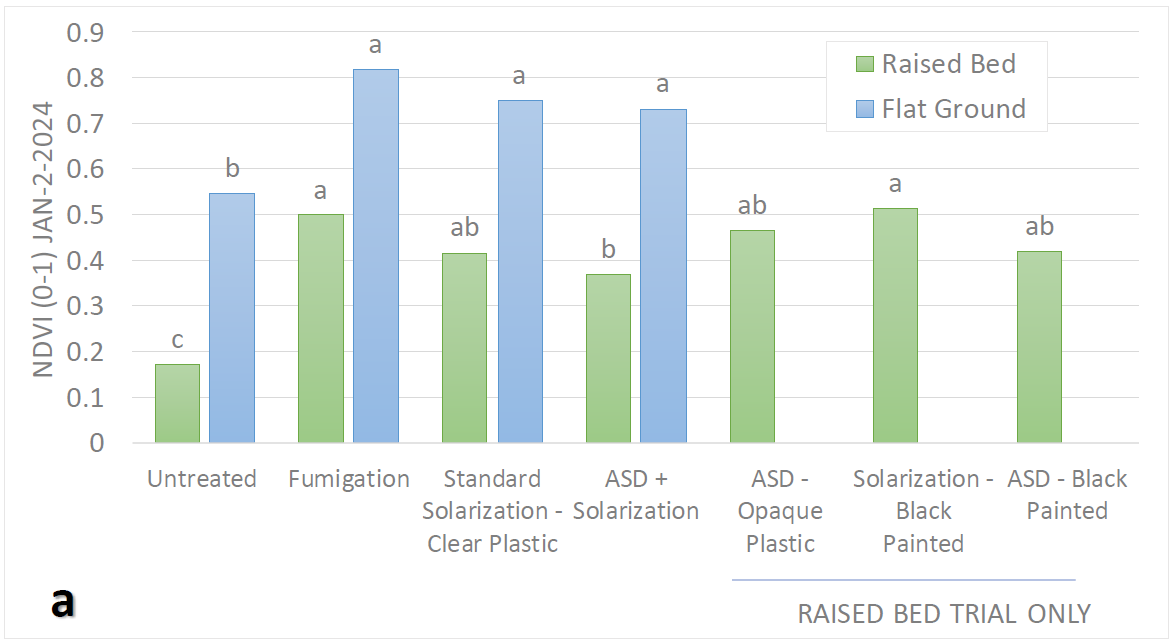
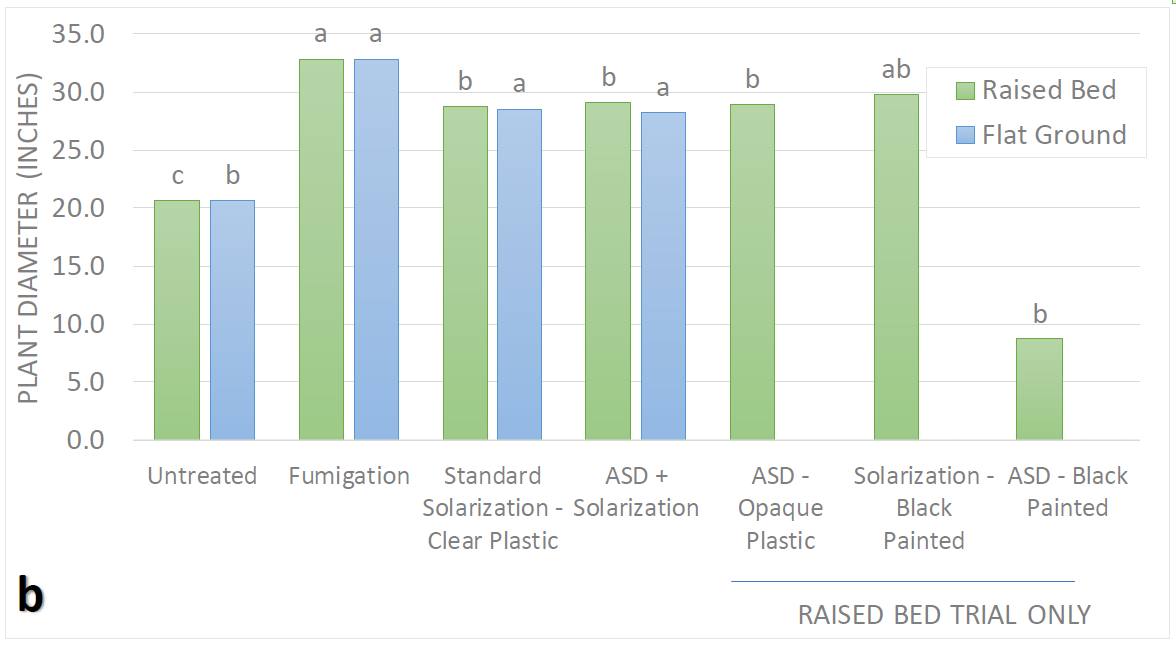
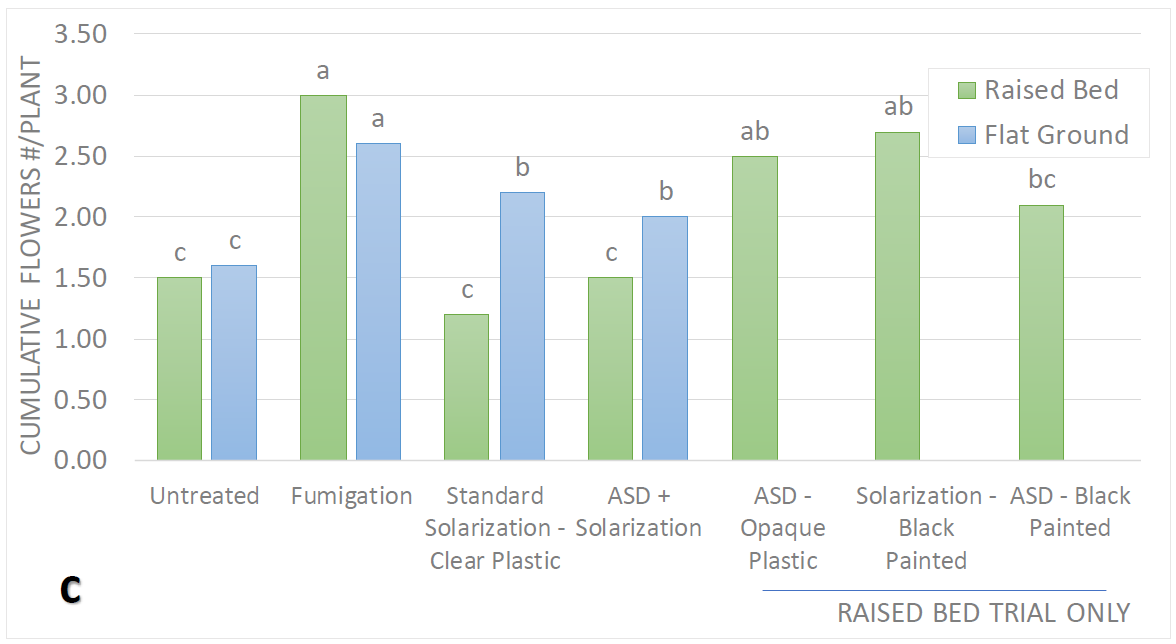
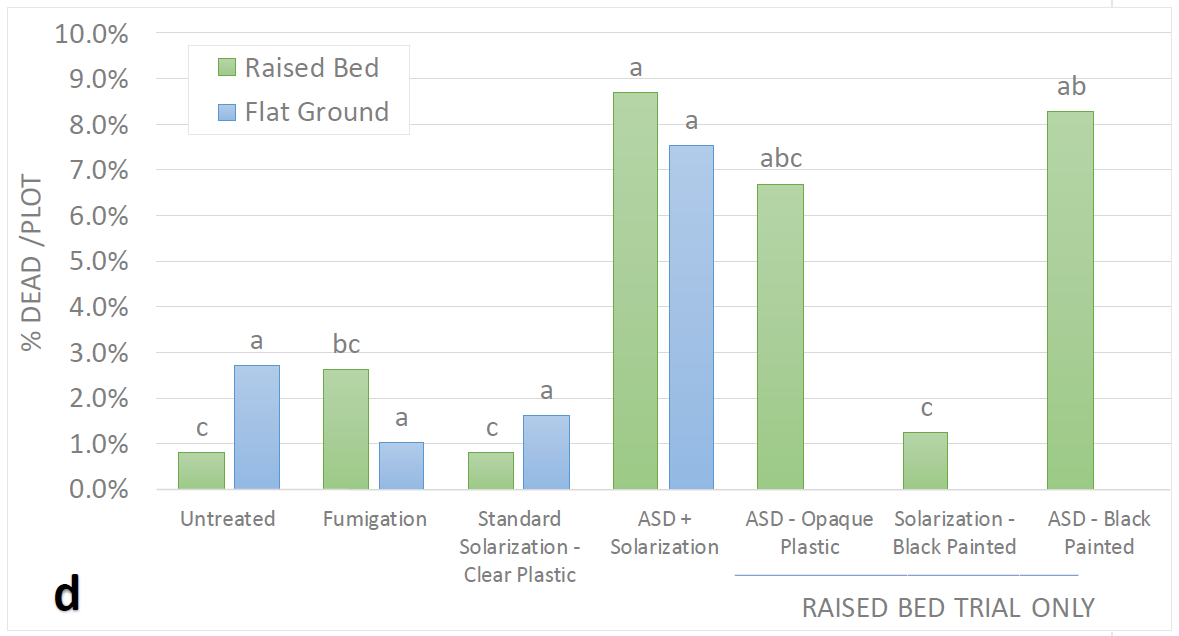
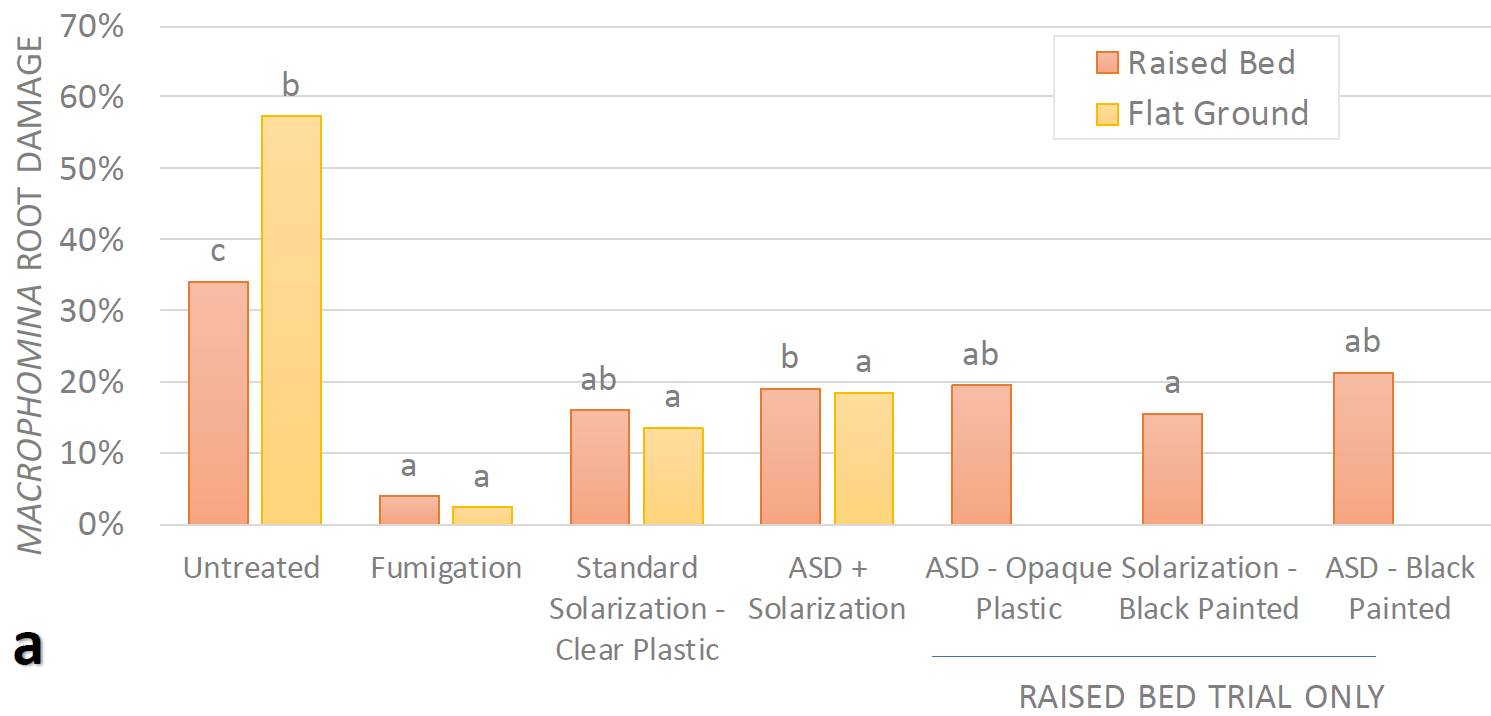
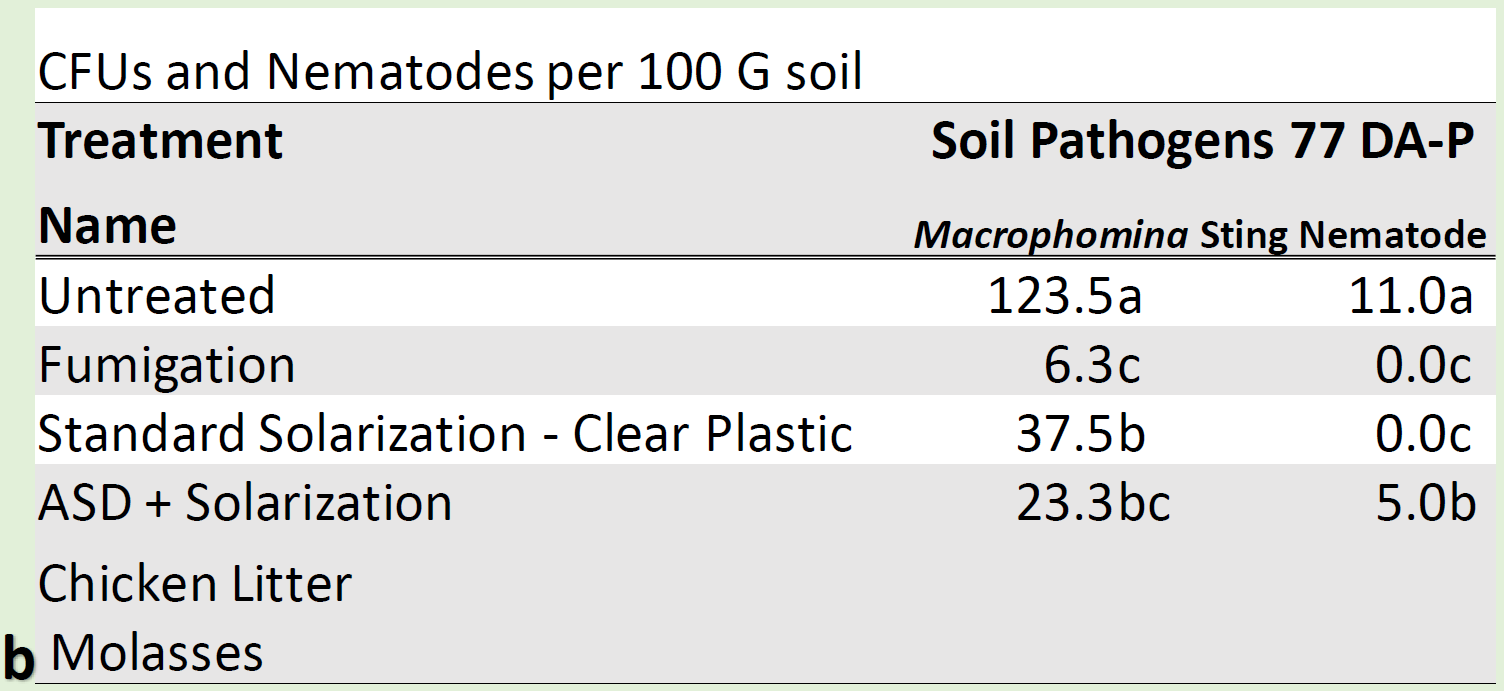
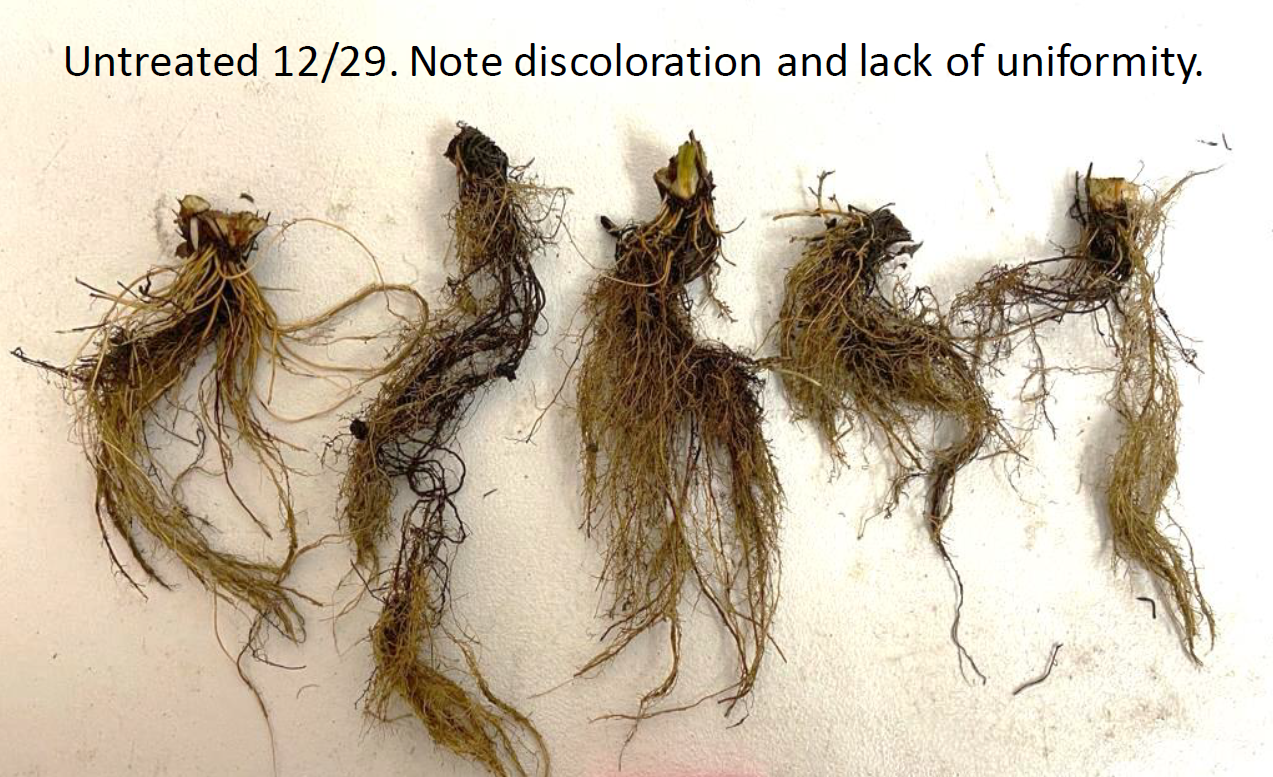
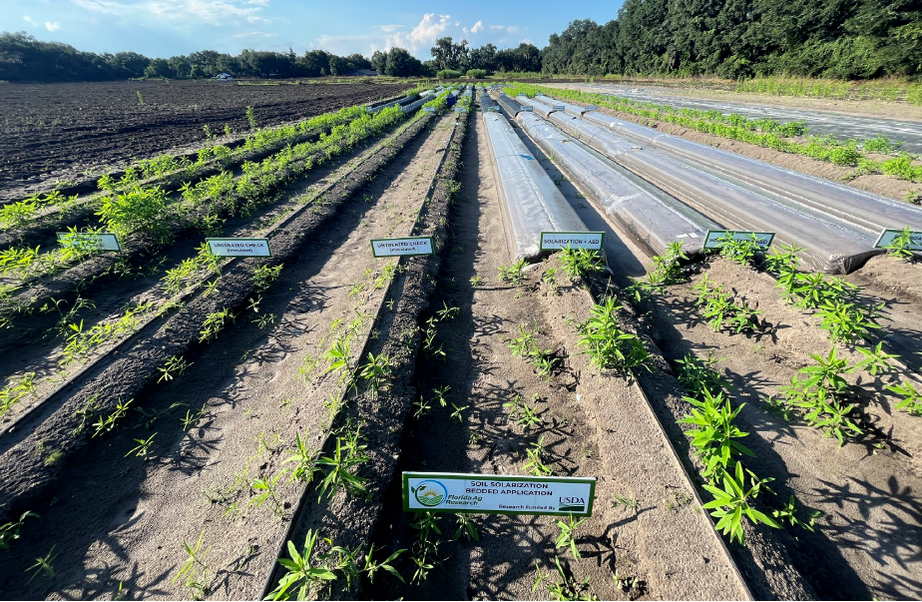
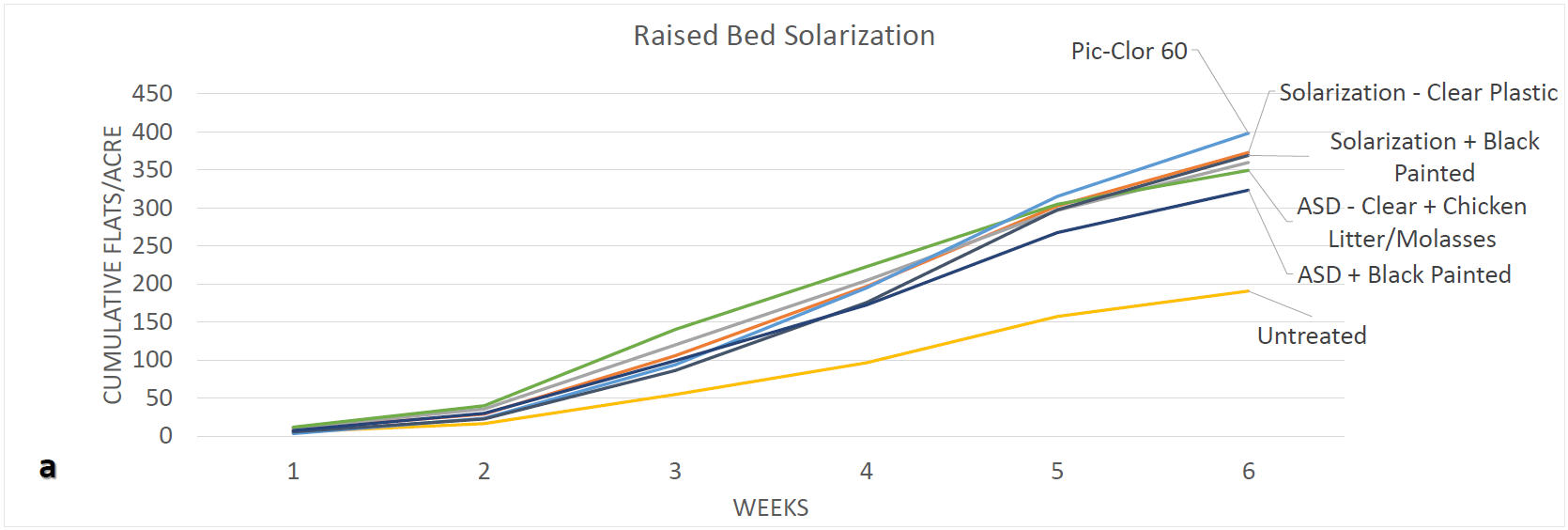
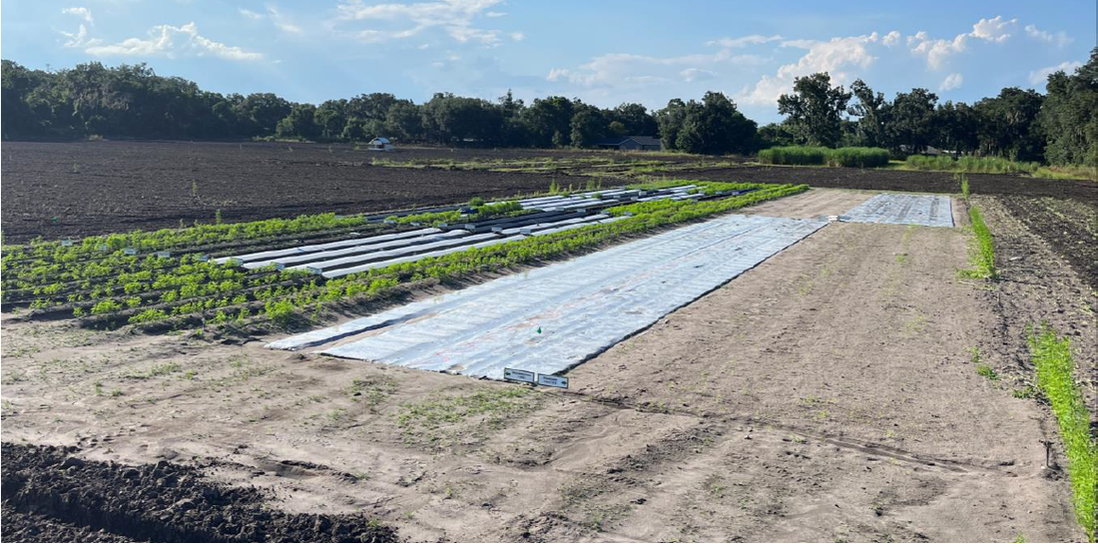

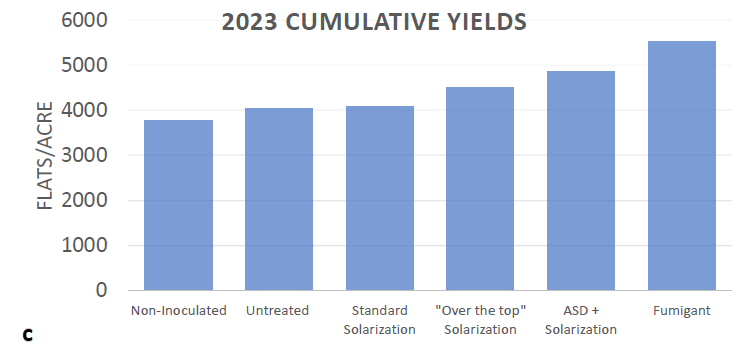
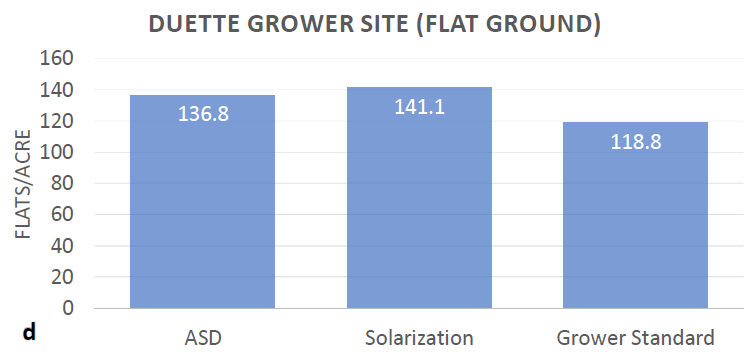
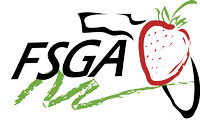

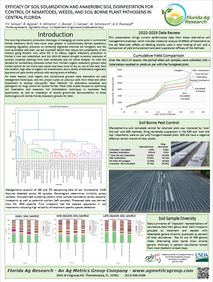
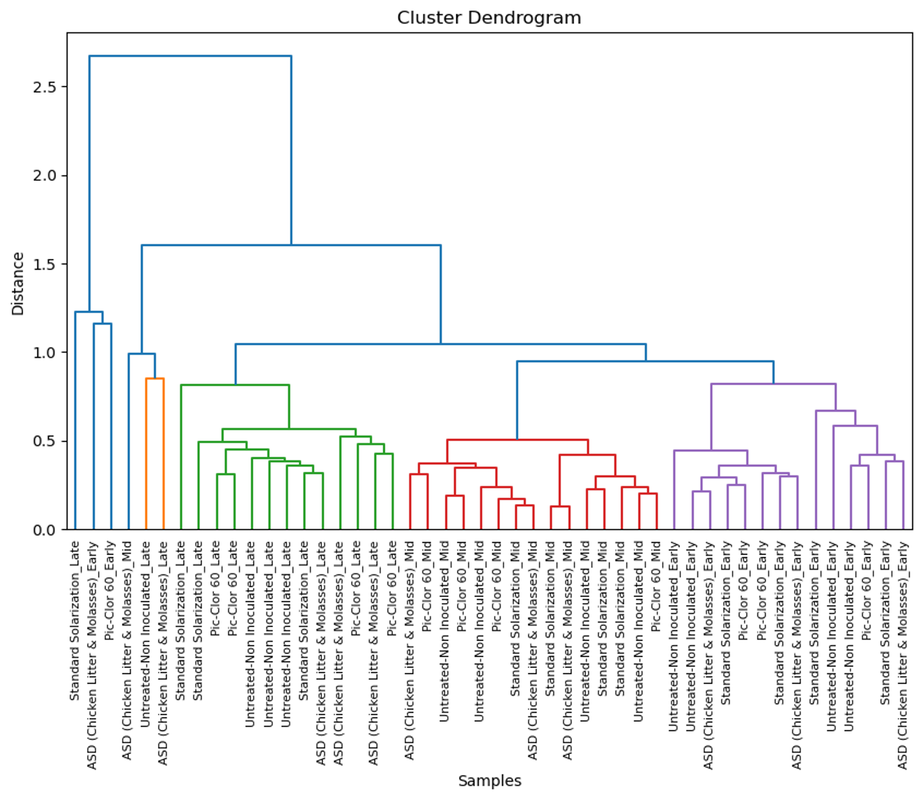
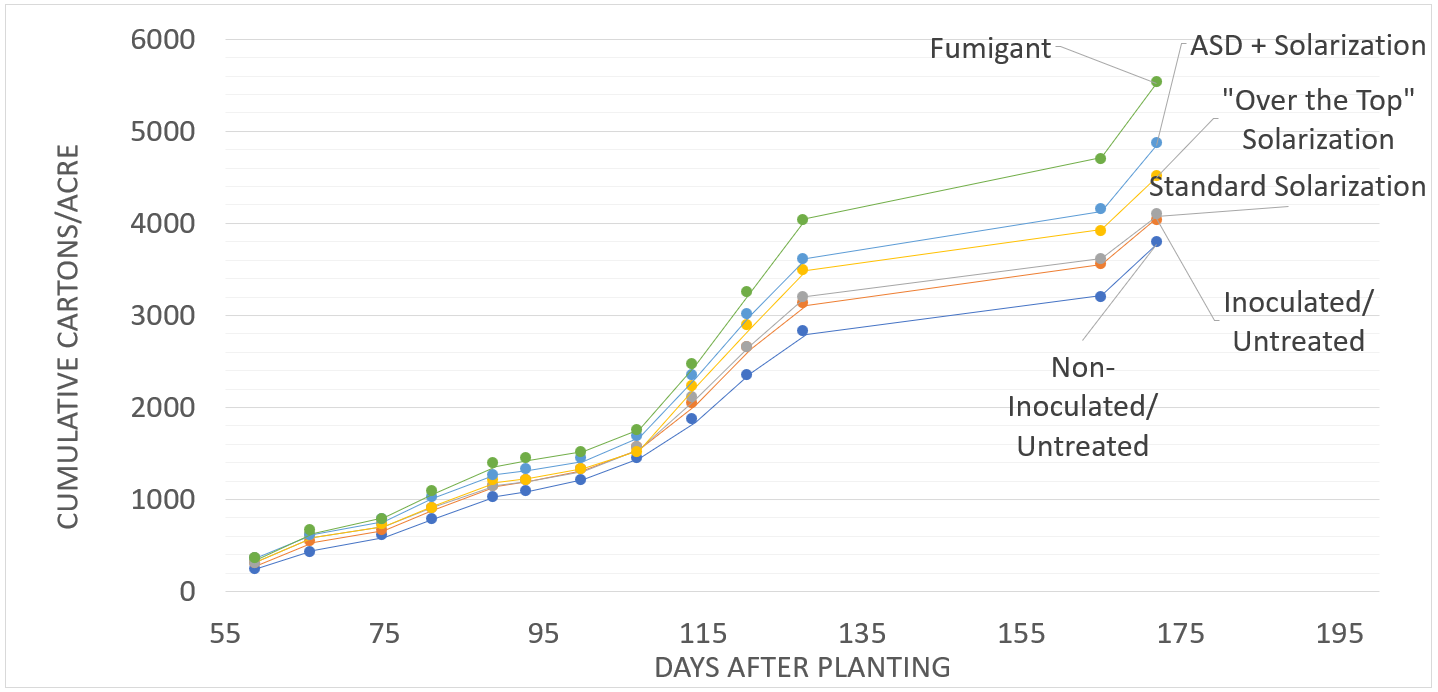

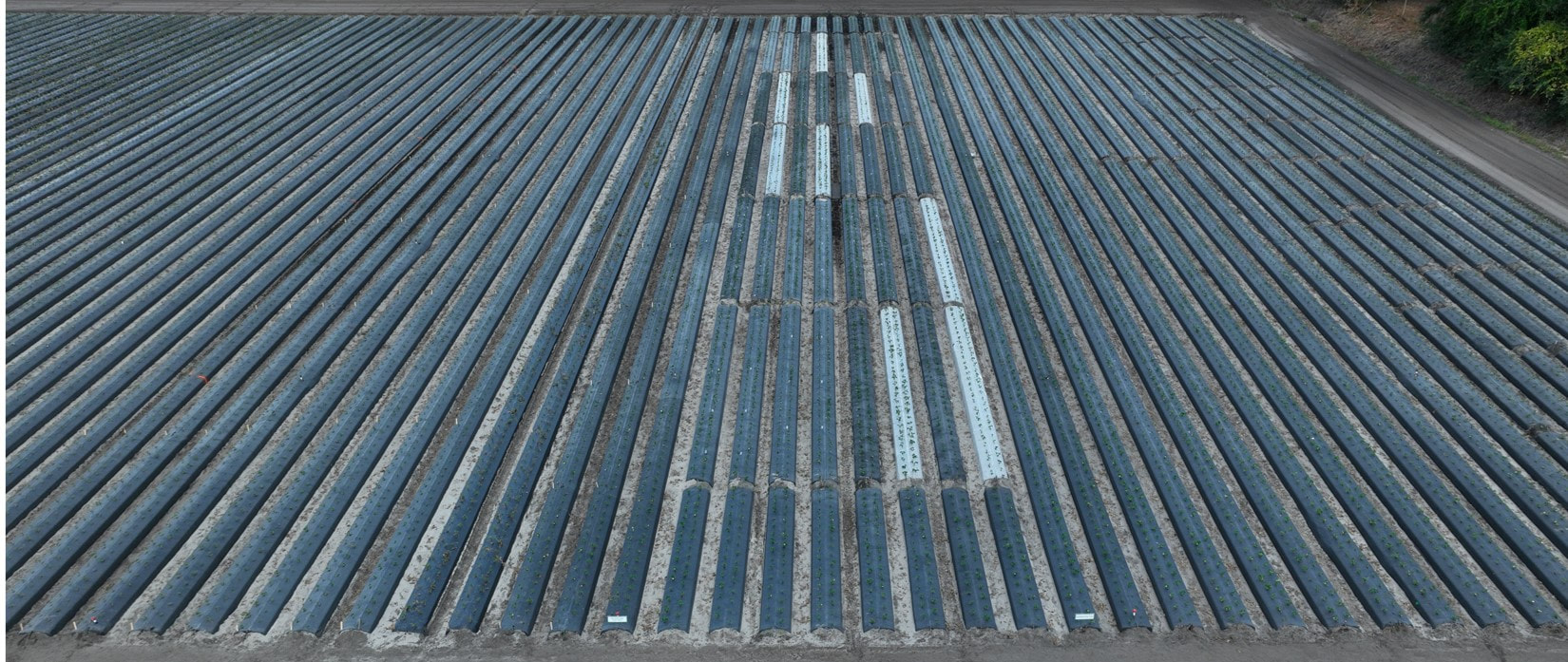
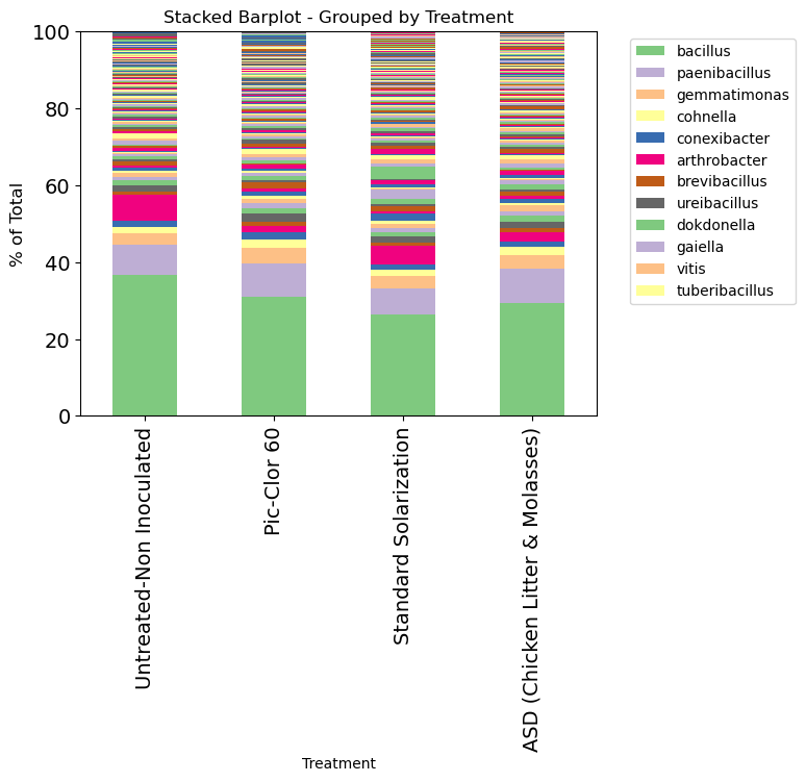
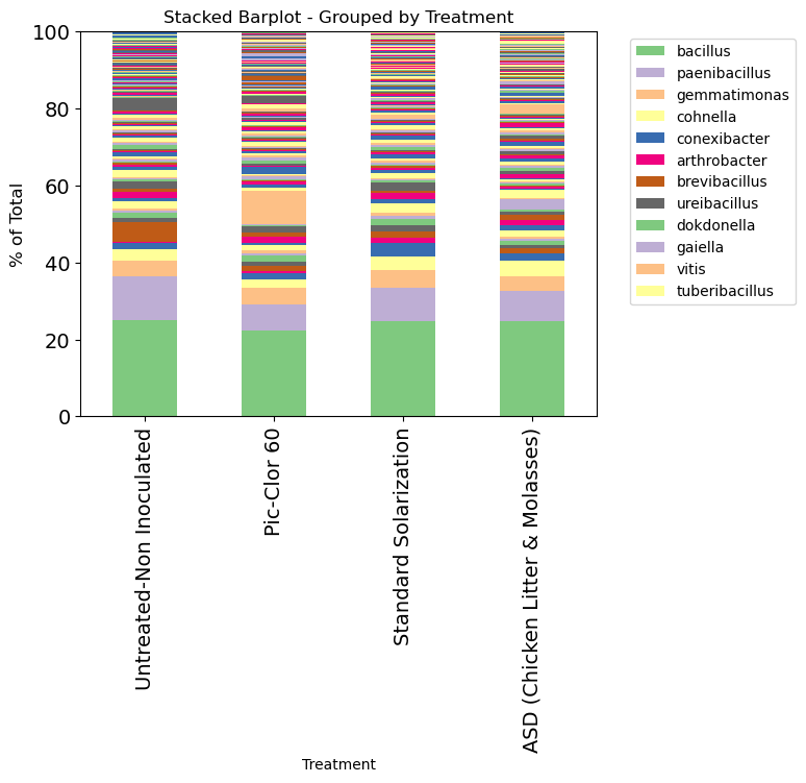
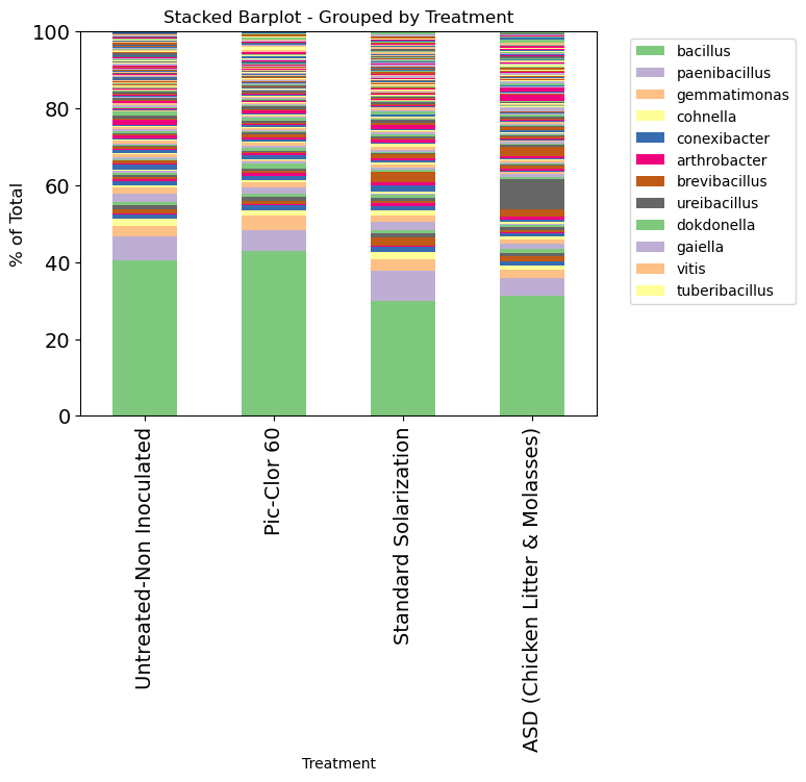


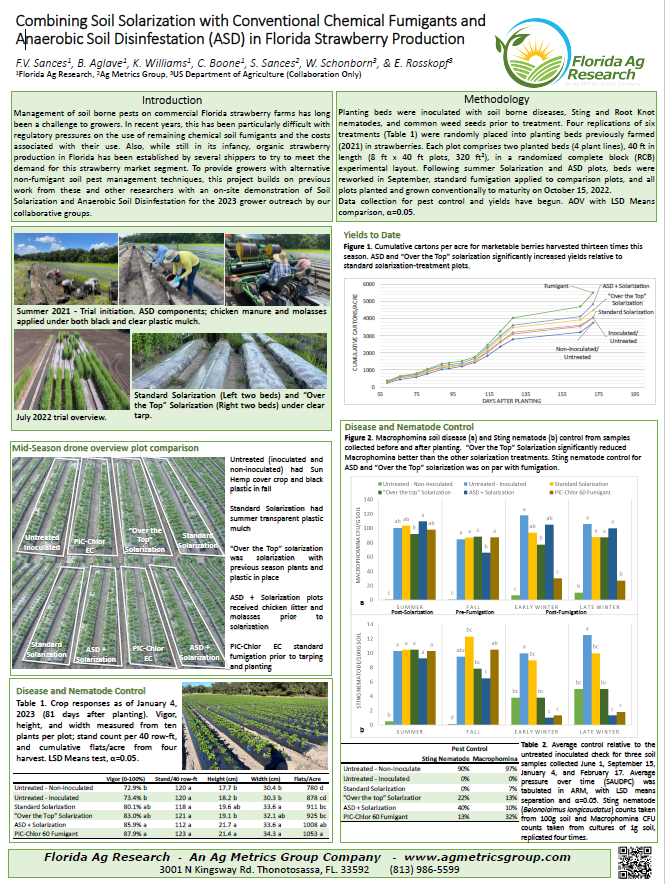
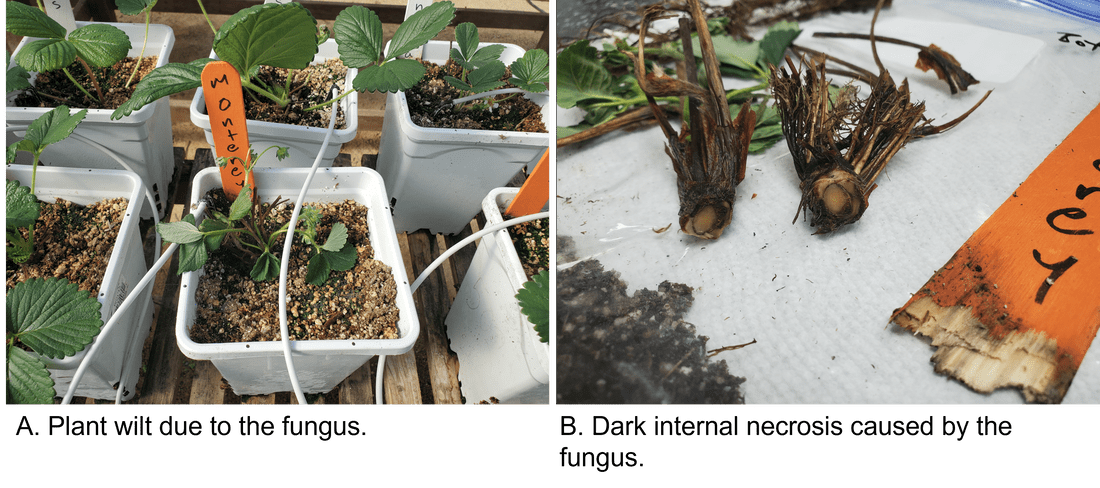
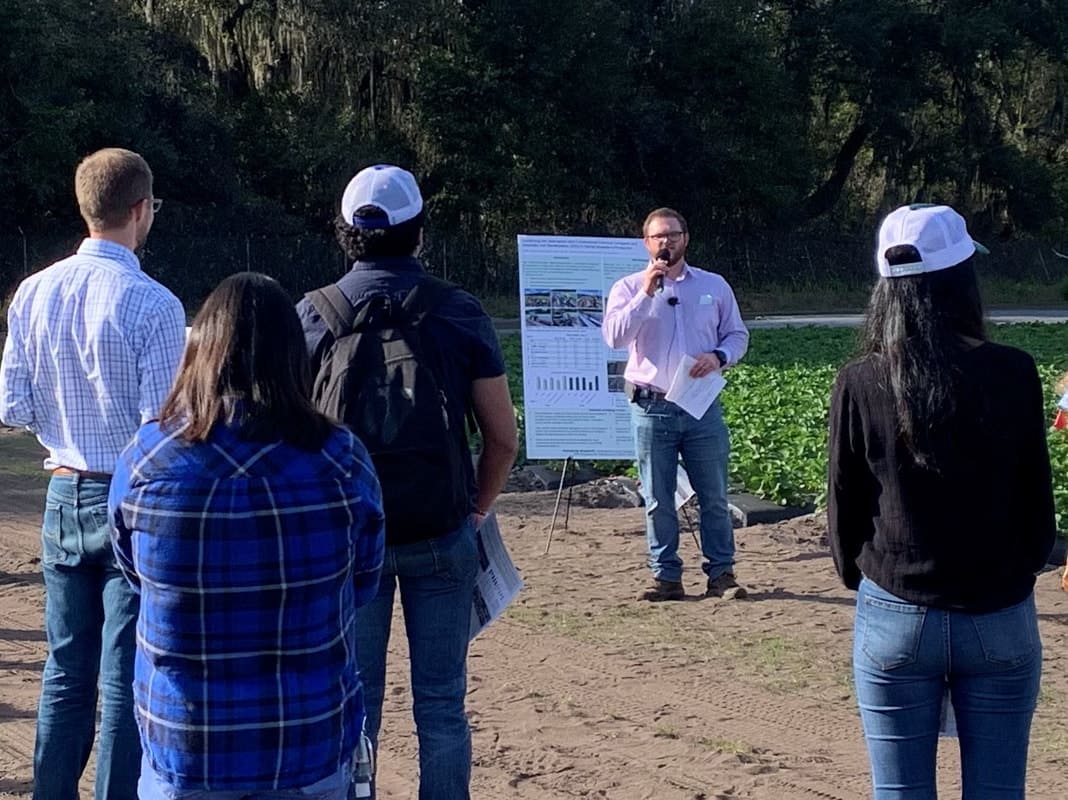
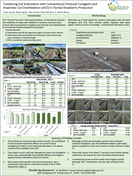



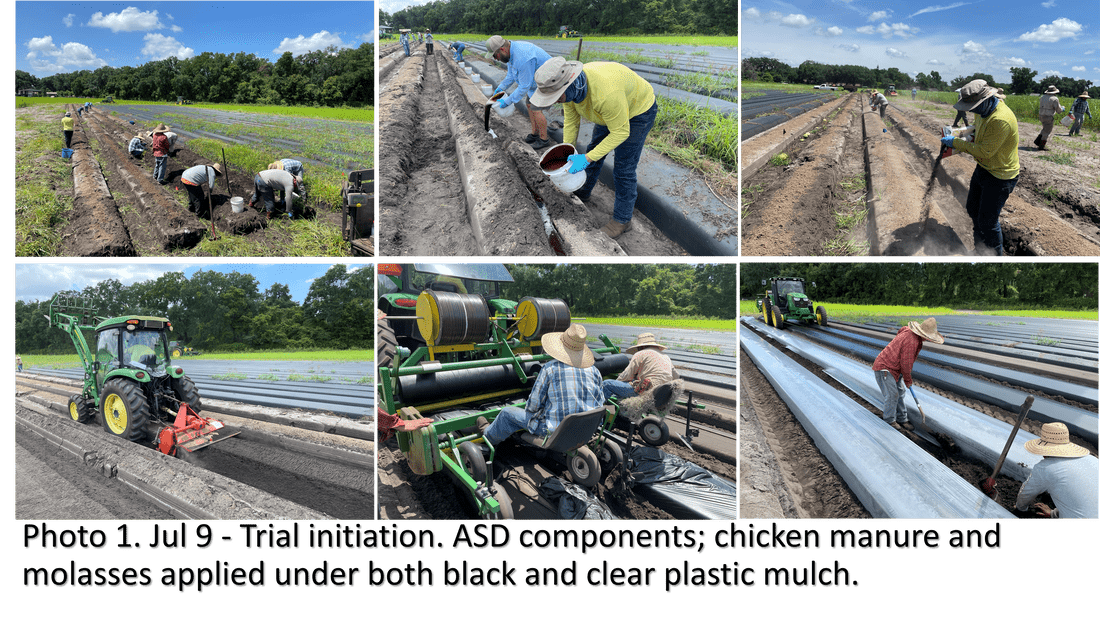
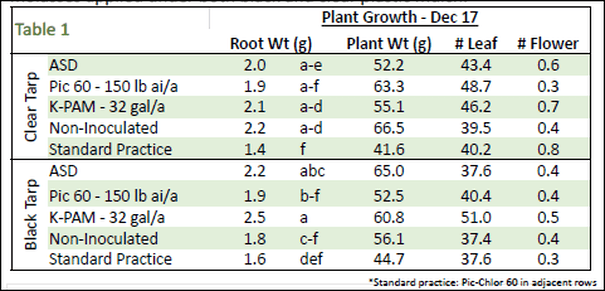
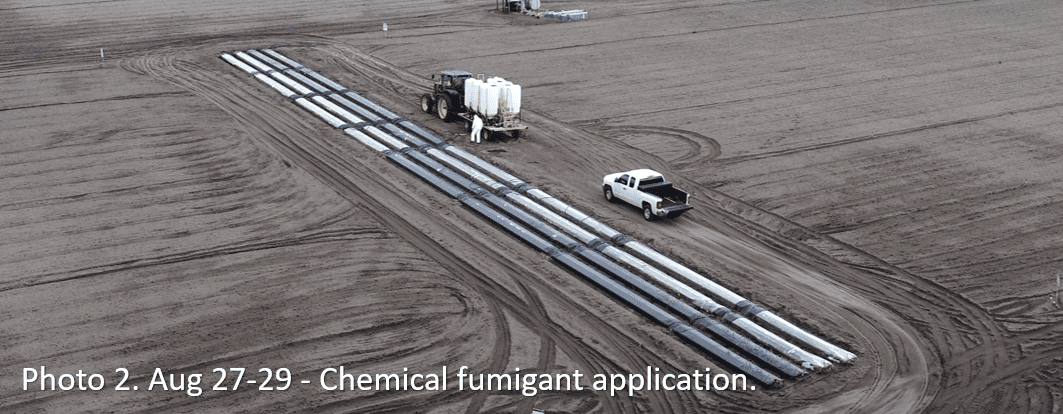
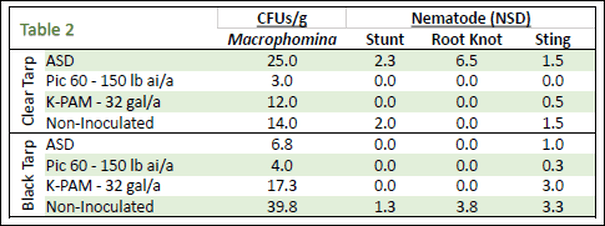
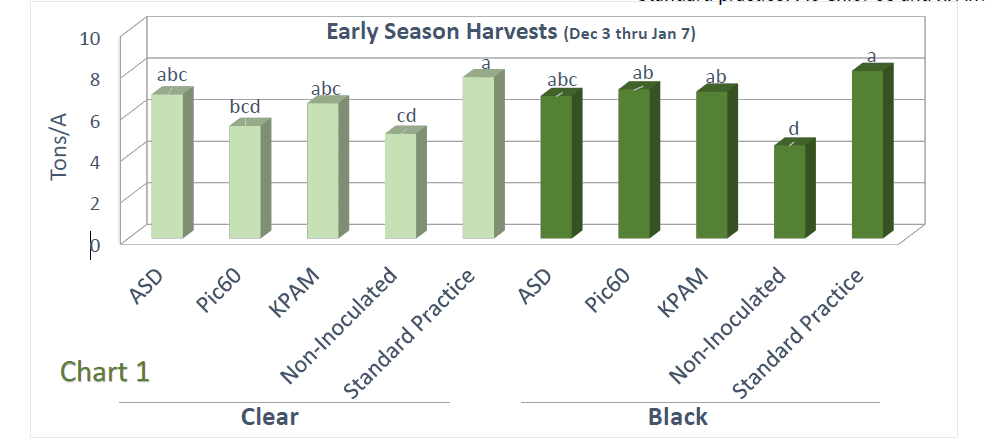
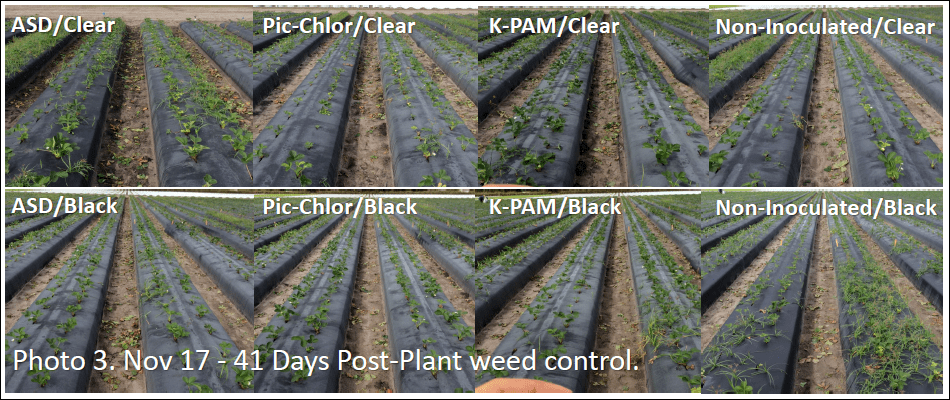

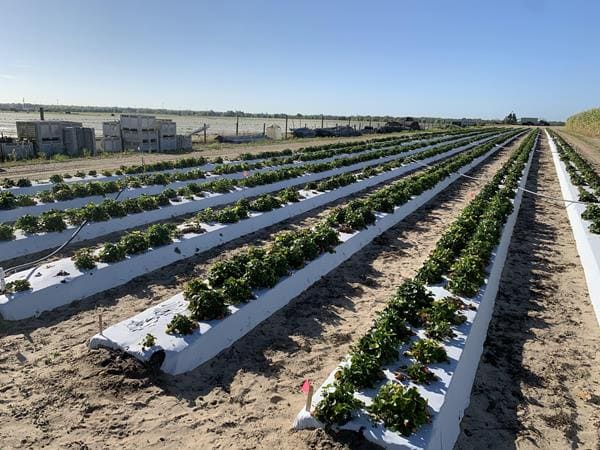
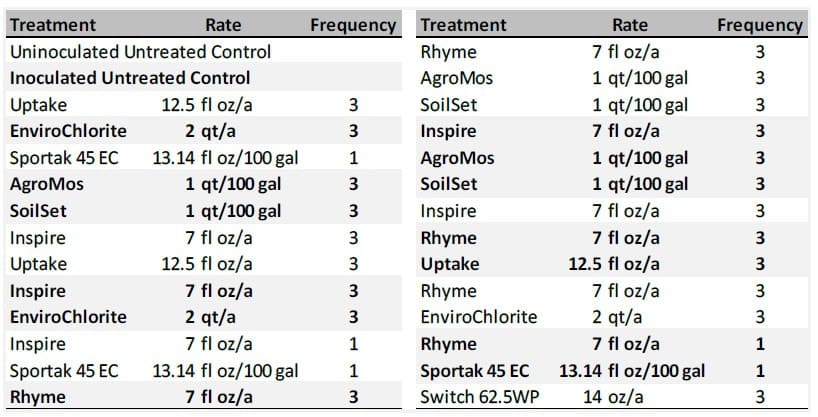
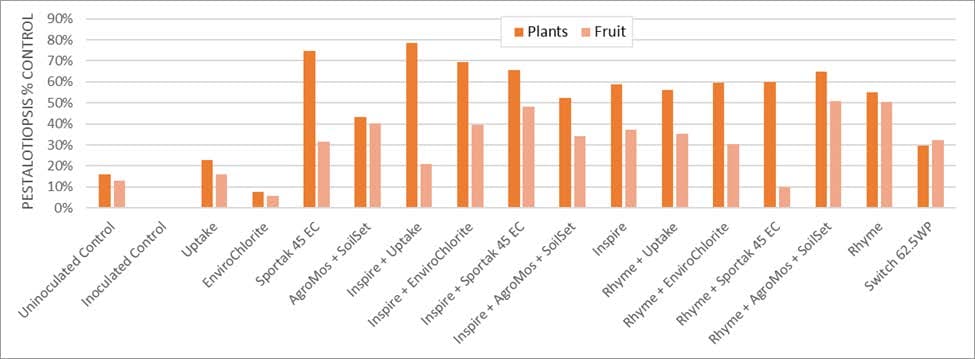
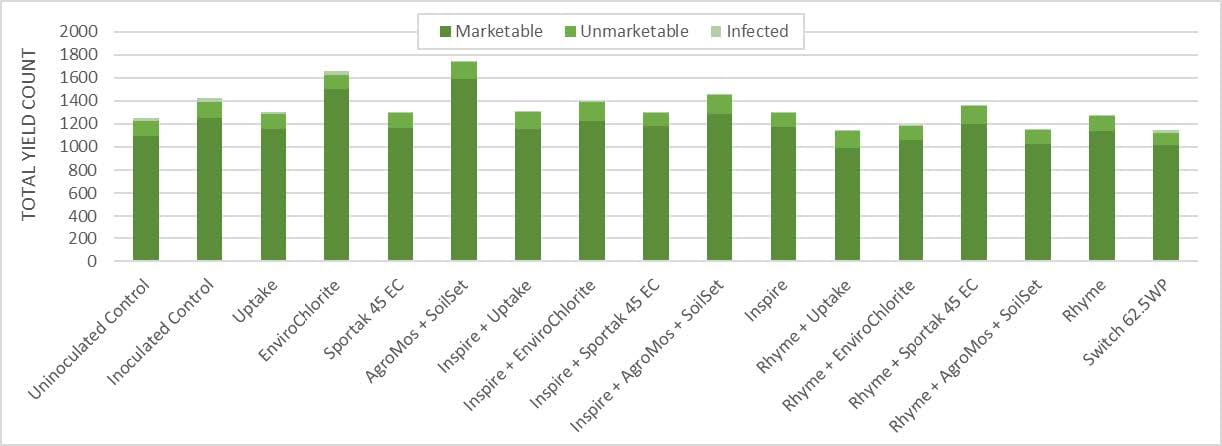
 RSS Feed
RSS Feed
